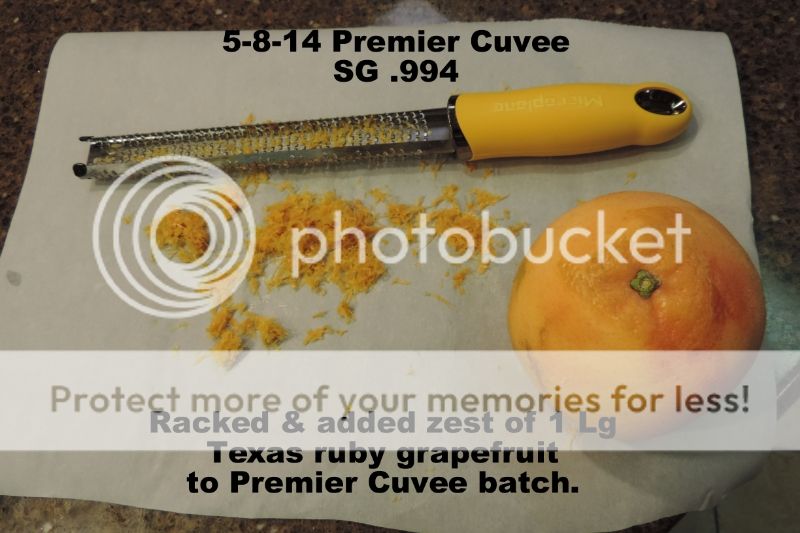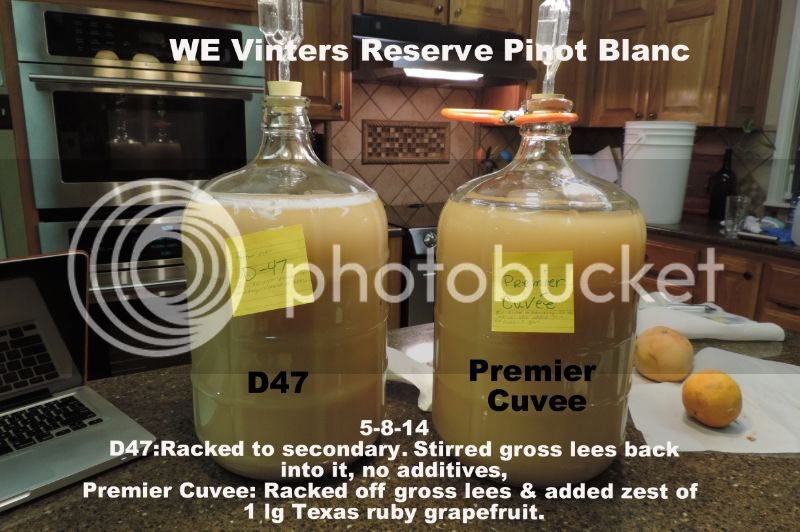joeswine
joeswine
- Joined
- Nov 15, 2007
- Messages
- 8,880
- Reaction score
- 2,930
simple syrup
mike is right ,4 quarts of sugar 2 quarts of water = 4 quarts of simple syrup...............usually but not always the standard kit could take 2 quarts of simple syrup to bring the sg up to 1.10,that all depends on what you sg is to start out with, go slow 1 quart at a time stir very well and let it settle down then take a reading to desired abv.
understand this: depending on what phase of the process your in PRIMARY to boost the sg and potential alcohol in the end OR finishing to BACK SWEETEN ,the proper chemistry is still required you can't escape the process.
simple syrup is a clean way to deliver what's desired in your process and should be a part of your tool box all the time.........................
mike is right ,4 quarts of sugar 2 quarts of water = 4 quarts of simple syrup...............usually but not always the standard kit could take 2 quarts of simple syrup to bring the sg up to 1.10,that all depends on what you sg is to start out with, go slow 1 quart at a time stir very well and let it settle down then take a reading to desired abv.
understand this: depending on what phase of the process your in PRIMARY to boost the sg and potential alcohol in the end OR finishing to BACK SWEETEN ,the proper chemistry is still required you can't escape the process.
simple syrup is a clean way to deliver what's desired in your process and should be a part of your tool box all the time.........................

Last edited:




 .WHETHER YOUR CAPITOLIZING OR BACKSWEETENING SIMPLE SYURP IS THE
.WHETHER YOUR CAPITOLIZING OR BACKSWEETENING SIMPLE SYURP IS THE 









 THINK OUTSIDE THEBOX FOR THAT ADDED DEMINISON TO YOUR WINE..BELOW ARE JUST SOME OF THE EXTRACTS YOU CAN MAKE AND USE IF YOU......................
THINK OUTSIDE THEBOX FOR THAT ADDED DEMINISON TO YOUR WINE..BELOW ARE JUST SOME OF THE EXTRACTS YOU CAN MAKE AND USE IF YOU......................




















































![[Upgraded] 9Pcs Tree Root Growing Box with Drain Holes, Half Transparent Plant Rooting Propagation Ball & Metal Core Twist Ties, for Fast Propagation Plants (Size M)](https://m.media-amazon.com/images/I/514MWQxtWOL._SL500_.jpg)











































 THINK ABOUT IT?
THINK ABOUT IT?






























